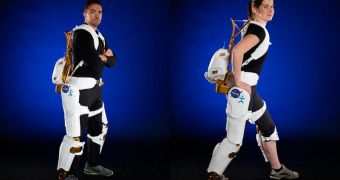We're no strangers to seeing certain inventions end up having practical applications in fields that they were never meant to have anything to do with, but NASA's exoskeleton may gain a special place in our hearts.
Even though it was never meant to be used anywhere on this Earth, the exoskeleton suit created as part of the Robonaut 2 program may find a purpose other than aiding astronauts in exploring other planets.
Weighing 57 pounds, or 25.84 kilograms, it may become a walking assistance solution for disabled people before it goes into space.
Truth be told, this is less shocking than it seems, since it will be decades, if not centuries, before humans step on other planets. There is no point in just letting such an invention lie in storage, regardless of how fascinating dust bunnies can be. And decades is a long time to gather dust.
The electro-mechanical contraption we have in mind is the X1 Robotic Exoskeleton, developed by NASA and the Florida Institute for Human and Machine Cognition (IHMC).
It has ten joints, four of which are motorized (hips and knees), and can not only augment wearer movements, but restrain them as well.
The latter functionality would provide space explorers with levels of resistance similar to those on Earth, even in environments with little to no atmosphere and gravity. It would not only make treks more comfortable, but would prevent muscles from wasting due to lack of use too.
Nevertheless, it is the ability to augment movements that we are more interested in here, as it would basically support part of the body weight and handle half of the movements on its own. Extended use of stairs and walking on varied terrain wouldn't be impossible for the elderly, injured or sick.
Motions like turning, sidestepping, flexing the foot in a direction or other, all are allowed by the exoskeleton. The usefulness will increase as more joints are motorized.
We can only hope that it won't take too many years for practical implementations to be ready. Go here for further reading.

 14 DAY TRIAL //
14 DAY TRIAL //